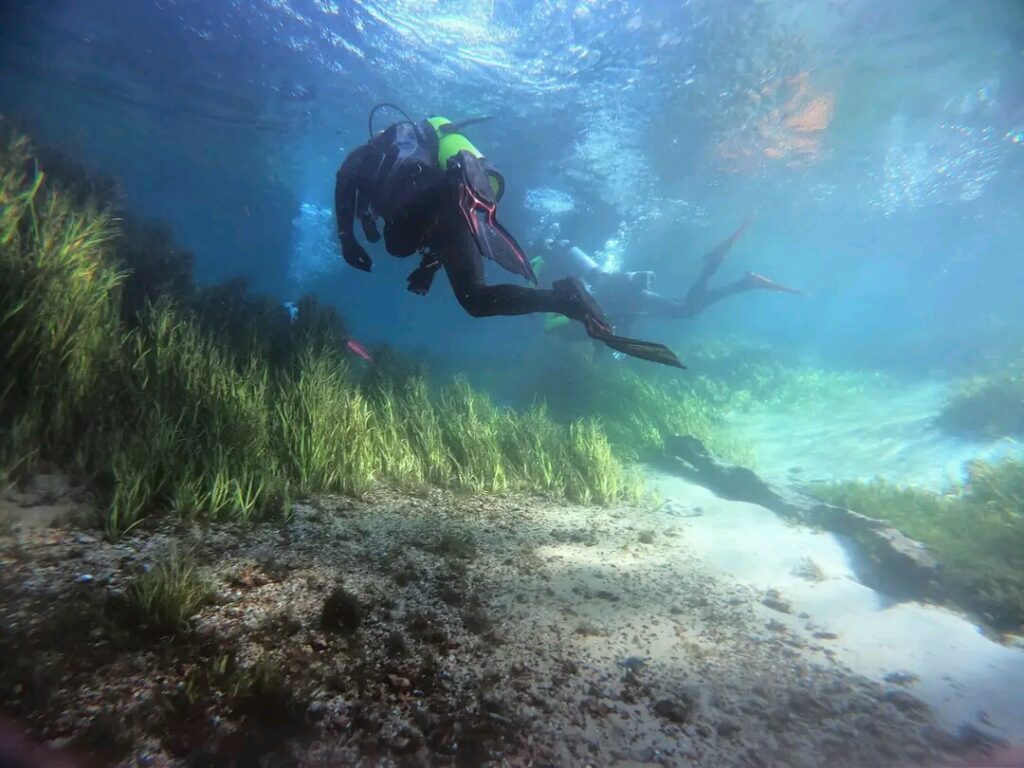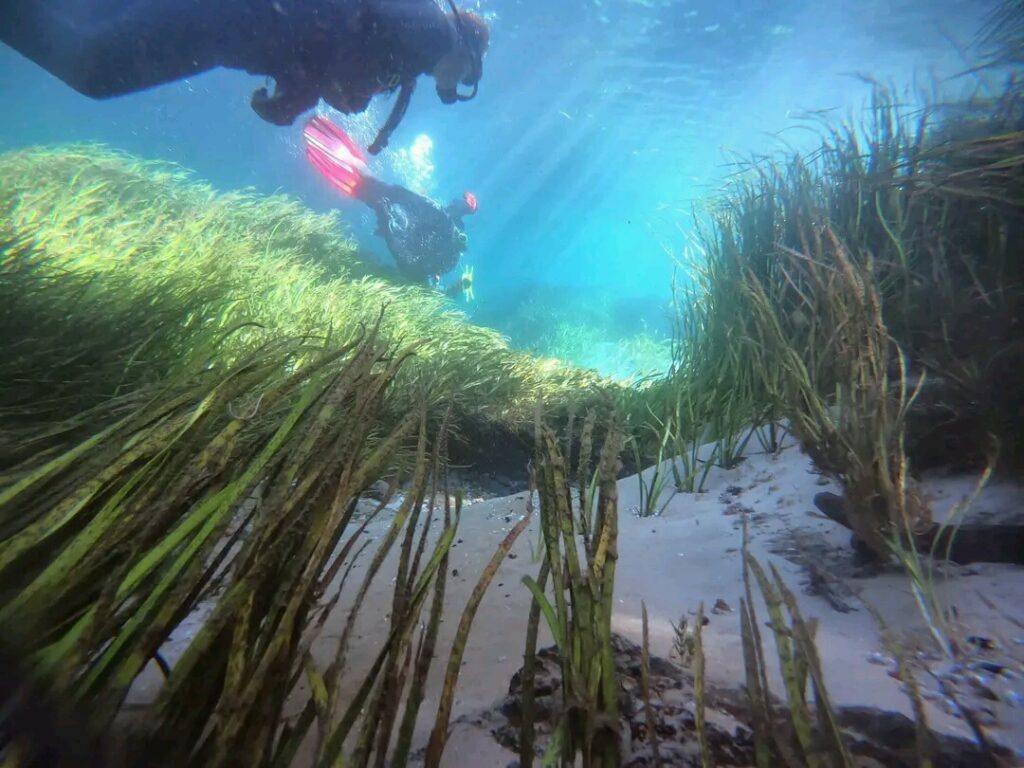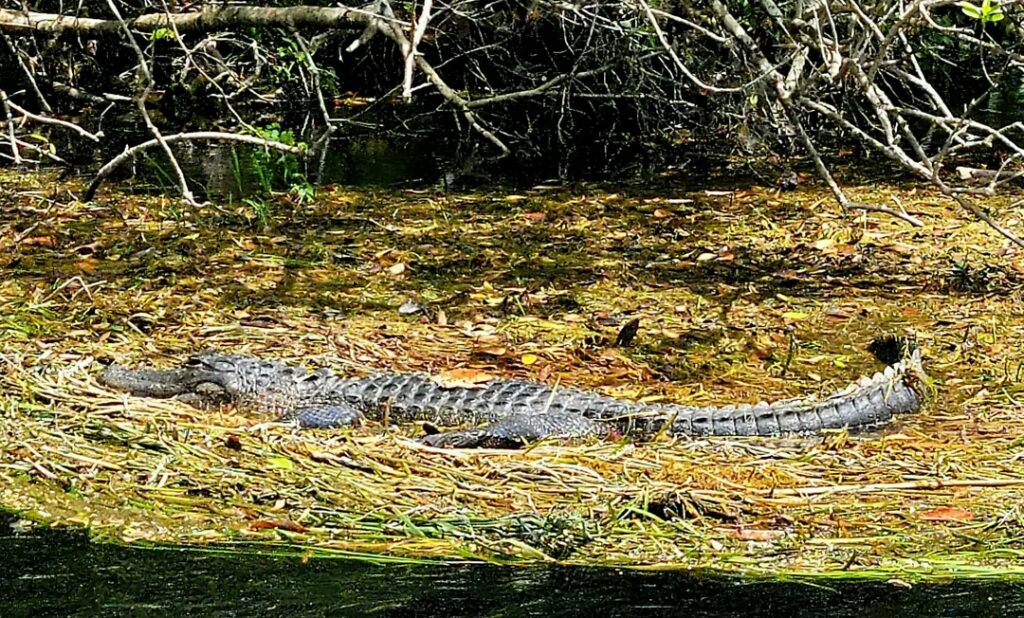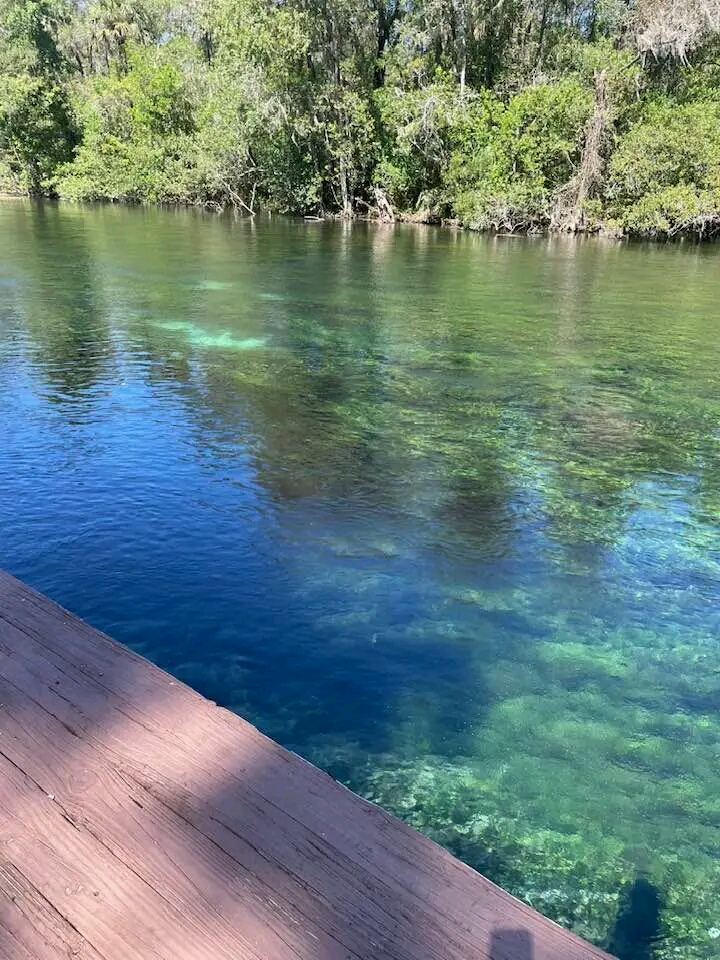Rainbow River is a breathtaking, crystal-clear spring-fed river known for its vibrant aquatic life, lush vegetation, and pristine waters. This hidden gem, located in Dunnellon, Florida, offers visitors an unparalleled experience of Florida’s natural beauty. From kayaking and tubing to wildlife spotting and eco-tourism, Rainbow River provides a perfect escape for nature lovers and adventurers alike. Below, we explore four key aspects of this stunning river.

The Natural Beauty and Ecology of Rainbow River
Rainbow River is known for its crystal-clear water and vibrant colors. Sunlight, aquatic plants, and white sandy riverbeds create a dazzling display of blues and greens. The water stays at a comfortable 72°F (22°C) year-round, making it ideal for swimming and other activities in any season.
The river is spring-fed, meaning its water comes from underground aquifers rather than rain or runoff. Its main source, Rainbow Springs, is one of Florida’s largest first-magnitude springs, releasing 400-600 million gallons of water per day. Flowing for 5.7 miles, the river eventually joins the Withlacoochee River.
The area around Rainbow River is lush and full of life. Cypress trees, oaks, and palms create a shady canopy, while underwater plants like eelgrass and hydrilla provide a habitat for fish and other wildlife. Visitors can spot playful otters swimming, turtles sunbathing on logs, and graceful birds such as herons, egrets, and ospreys soaring above.
In winter, manatees visit the river, drawn by its warm, constant temperature. The clear water makes it easy to see schools of fish, including bass, gar, mullet, and catfish. With its rich wildlife and untouched beauty, Rainbow River remains a natural treasure and a paradise for nature lovers.

Outdoor Activities and Recreation
Rainbow River is a perfect destination for outdoor lovers, offering many fun activities in a beautiful natural setting. Tubing is one of the most popular ways to enjoy the river. The slow current allows visitors to float peacefully for 2-4 hours, taking in the scenery. Several local businesses offer tube rentals and shuttle services, making it easy for families and groups to enjoy.
For a more active adventure, visitors can try kayaking, canoeing, or paddle boarding. Unlike tubing, these activities let you explore freely, paddle upstream, and discover hidden spots along the river. The crystal-clear water makes snorkeling and swimming a must. Many areas have deep springs and underwater caverns, perfect for snorkeling. Since motorized boats must move slowly, the river stays safe for swimmers.For those who prefer to stay on land, Rainbow Springs State Park has beautiful hiking trails that wind through oak forests, past waterfalls, and along the riverbanks. These trails offer breathtaking views and chances to spot wildlife. The park also has picnic areas, making it a great place to relax and enjoy a meal in nature. Whether in the water or on land, Rainbow River offers something for everyone.


Conservation and Environmental Protection
Rainbow River is a protected waterway, and many efforts have been made to keep its ecosystem healthy. In 1986, it was designated a Florida Aquatic Preserve, ensuring protection from overdevelopment and pollution. This status prevents harmful activities like large construction projects or industrial waste dumping, which could damage the river.
However, Rainbow River still faces environmental challenges. Nitrate pollution from fertilizers, septic systems, and urban runoff can cause excessive algae growth, which harms the river’s natural balance. To combat this, conservation groups, local officials, and volunteers work hard to monitor water quality, restore native plants, and promote eco-friendly practices.
Visitors also play a role in protecting the river. They are encouraged to follow Leave No Trace principles, such as using eco-friendly sunscreen, properly disposing of trash, and avoiding plastic pollution. Boaters should respect no-anchor zones to protect underwater plants. Additionally, visitors should leave nature undisturbed, avoiding the removal of plants, shells, or wildlife.
These efforts help keep Rainbow River clean and thriving. By following conservation guidelines, visitors can enjoy its beauty while ensuring its preservation for future generations.

History and cultural significance
Rainbow River has a long history, with evidence showing that Native American tribes lived in the area thousands of years ago. The Timucua people were among the first known settlers. They depended on the river’s abundant fish and wildlife and used dugout canoes to travel through the waters. Archaeologists have found pottery and stone tools near Rainbow Springs, giving insight into their way of life.
From the 1920s to the 1970s, Rainbow Springs became a popular tourist attraction. Developers built artificial waterfalls, gardens, and even a zoo to draw visitors, much like Silver Springs. However, when larger theme parks like Disney World opened, Rainbow Springs saw a decline in tourism.In the 1990s, efforts began to restore the area to its natural state. This led to the creation of Rainbow Springs State Park, ensuring the river remains a place for both recreation and conservation. Today, Rainbow River offers a perfect mix of adventure and relaxation. Visitors can tube, kayak, snorkel, or hike while enjoying its clear waters and scenic trails.Thanks to ongoing conservation efforts, Rainbow River stays protected and thriving. Its Old Florida charm and pristine nature make it a must-visit destination for anyone looking to experience Florida’s natural beauty.

